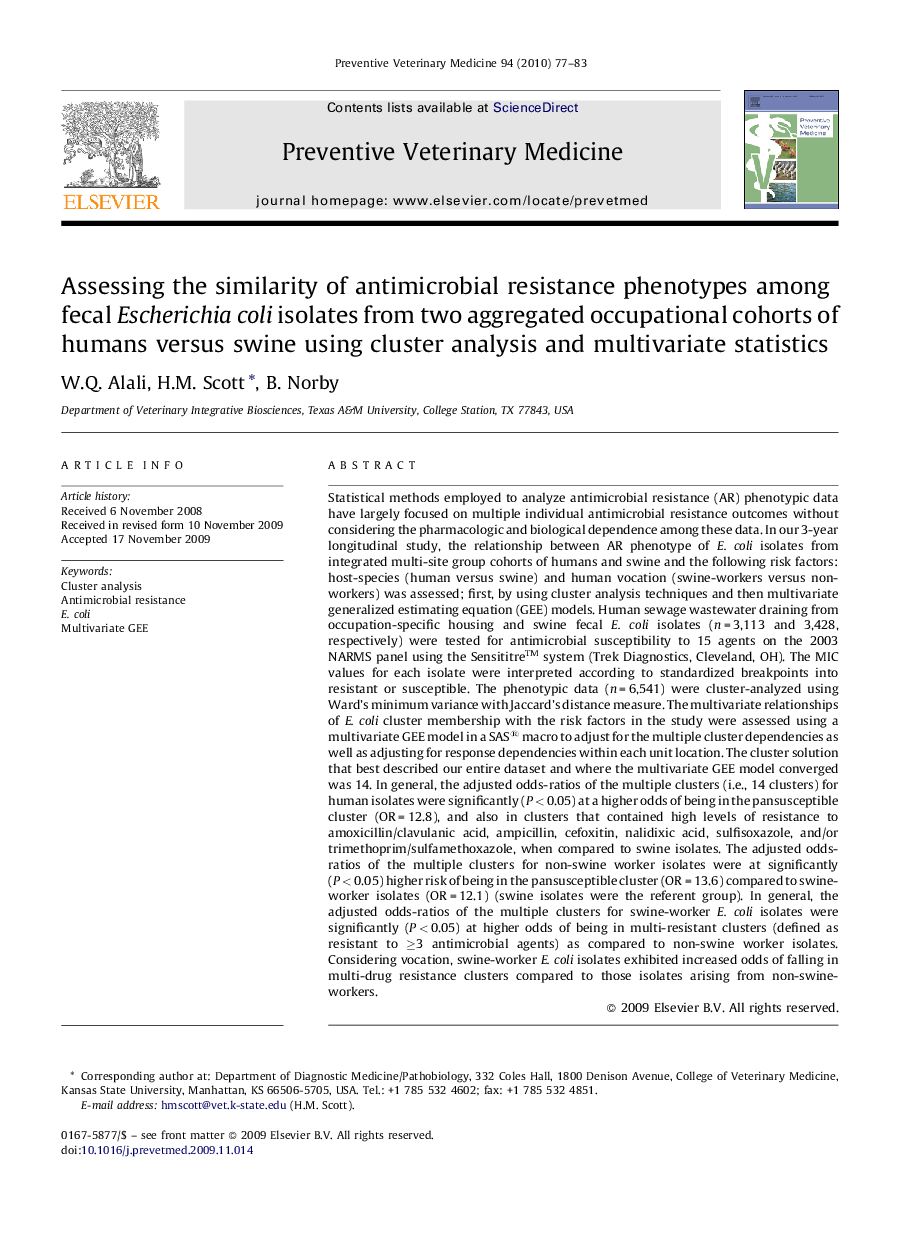| کد مقاله | کد نشریه | سال انتشار | مقاله انگلیسی | نسخه تمام متن |
|---|---|---|---|---|
| 2453006 | 1554204 | 2010 | 7 صفحه PDF | دانلود رایگان |

Statistical methods employed to analyze antimicrobial resistance (AR) phenotypic data have largely focused on multiple individual antimicrobial resistance outcomes without considering the pharmacologic and biological dependence among these data. In our 3-year longitudinal study, the relationship between AR phenotype of E. coli isolates from integrated multi-site group cohorts of humans and swine and the following risk factors: host-species (human versus swine) and human vocation (swine-workers versus non-workers) was assessed; first, by using cluster analysis techniques and then multivariate generalized estimating equation (GEE) models. Human sewage wastewater draining from occupation-specific housing and swine fecal E. coli isolates (n = 3,113 and 3,428, respectively) were tested for antimicrobial susceptibility to 15 agents on the 2003 NARMS panel using the Sensititre™ system (Trek Diagnostics, Cleveland, OH). The MIC values for each isolate were interpreted according to standardized breakpoints into resistant or susceptible. The phenotypic data (n = 6,541) were cluster-analyzed using Ward's minimum variance with Jaccard's distance measure. The multivariate relationships of E. coli cluster membership with the risk factors in the study were assessed using a multivariate GEE model in a SAS® macro to adjust for the multiple cluster dependencies as well as adjusting for response dependencies within each unit location. The cluster solution that best described our entire dataset and where the multivariate GEE model converged was 14. In general, the adjusted odds-ratios of the multiple clusters (i.e., 14 clusters) for human isolates were significantly (P < 0.05) at a higher odds of being in the pansusceptible cluster (OR = 12.8), and also in clusters that contained high levels of resistance to amoxicillin/clavulanic acid, ampicillin, cefoxitin, nalidixic acid, sulfisoxazole, and/or trimethoprim/sulfamethoxazole, when compared to swine isolates. The adjusted odds-ratios of the multiple clusters for non-swine worker isolates were at significantly (P < 0.05) higher risk of being in the pansusceptible cluster (OR = 13.6) compared to swine-worker isolates (OR = 12.1) (swine isolates were the referent group). In general, the adjusted odds-ratios of the multiple clusters for swine-worker E. coli isolates were significantly (P < 0.05) at higher odds of being in multi-resistant clusters (defined as resistant to ≥3 antimicrobial agents) as compared to non-swine worker isolates. Considering vocation, swine-worker E. coli isolates exhibited increased odds of falling in multi-drug resistance clusters compared to those isolates arising from non-swine-workers.
Journal: Preventive Veterinary Medicine - Volume 94, Issues 1–2, 1 April 2010, Pages 77–83